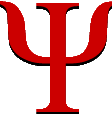


















Note: These questions are part of a larger data base of questions on Module 10 & are selected to represent the type of question you should expect on unit exam three. You can, in fact, expect to see many of these very same questions on that exam. Exam questions, however, may deal with topics not covered in the self tests or in lectures but are discussed in your textbook. You are responsible for the content of your text book plus the content of lectures, interactive activities, & material on the web site. Use these sample questions to test yourself & to practice for the test. 1. Instrumental conditioning is a.k.a. :
2. Those who study cognitive learning claim that learning can take place in an individual:
3. What is described as the idea that behaviors followed by positive consequences are strengthened, while behaviors followed by negative consequences are weakened?
4. Law of effect is to ______ as operant conditioning is to _______.
5. The shaping procedure succeeds or fails depending on:
6. What is the best explanation for a professional football player eating pork every day that a game is scheduled?
7. Classical is to operant as:
8. Reinforcement is to _______, as punishment is to ______.
9. Reinforcers, whether they be positive or negative, have the same effect on behavior, which is to:
10. Kurt & Kyle are out walking. Kurt says, “Hey, I’ve got a pebble in my shoe,” and proceeds to take off his shoe and to remove the pebble. “That feels better,” says Kurt. Kyle believes that Kurts’ behavior of removing the pebble is a ______ because it increases the chance that Kurt will repeat the behavior if another pebble gets in his shoe.
11. The value of a secondary reinforcer is:
12. What refers to removing a reinforcing stimulus after a response that decreases the odds that the response will recur?
13. When is continuous reinforcement most appropriate?
14. Partial reinforcement schedules:
15. A _______ refers to a reinforcer occurring only after an unchanging number of responses take place.
16. After a period of extinction, a temporary recovery in rate of responding is called:
17. Which of the following theorists argued that learning involves a mental representation of the environment?
18. “I can see in my mind the layout of the town I visited last summer.” This person is using her ______ of the town.
19. Which of the following theorists argued that learning can take place when someone is watching another person and performs that behavior even when not reinforced?
20. The most important conclusion from the Bandura Bobo doll study is that:
21. “I know and understand this material,” says Rick. His instructor would agree with him. But when it comes time to prove his understanding on the exam, he typically doesn’t do well. This exemplifies the idea of:
22. The four processes necessary for observational learning are attention, memory, imitation, and ___________.
23. ______ is a mental process marked by sudden and unexpected solution of a problem.
24. “Ah ha!” is to ______ as reinforcement is to _______.
25. A newsletter article has the headline, “Scientists find innate tendency that helps learning.” You realize that the “innate tendency” refers to:
26. Which of the following statements regarding imprinting is not true?
27. A biological tendency found in animals to be able to recognize, attend to, and store certain cues more easily than other cues is called:
28. Time-out is preferable to physical punishment because:
29. The treatment or therapy used to modify problem behavior based on the principles of learning is called
30. Spanking is an example of
|
|
General Psychology Robert C. Gates 
|
|
|
